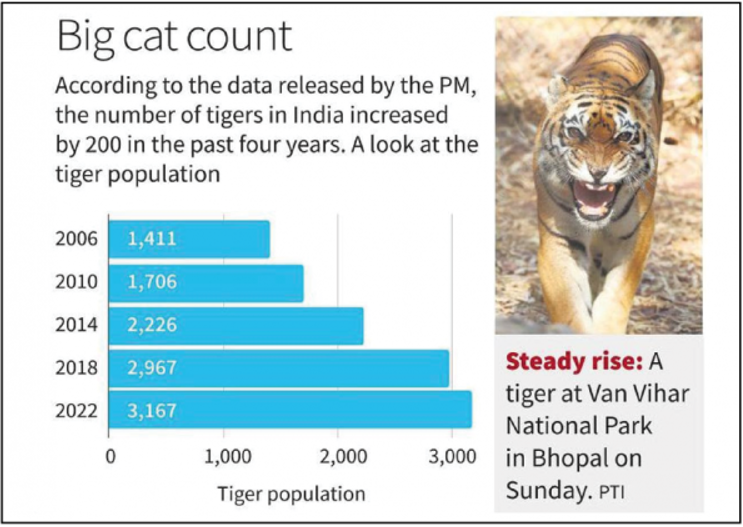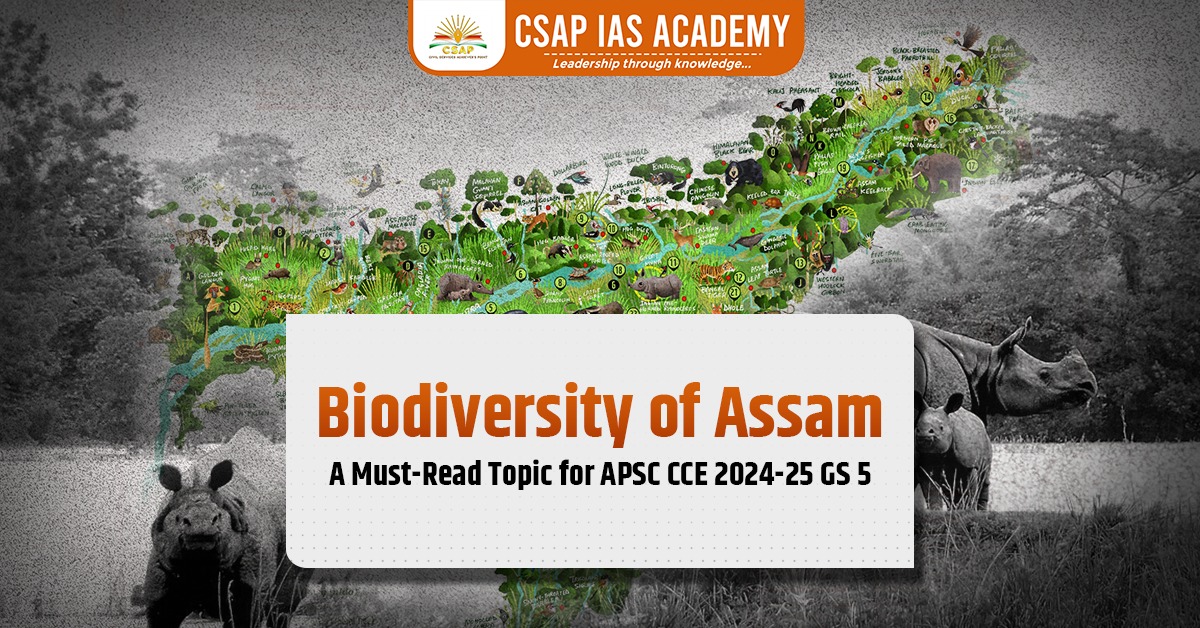Project Tiger is one of India’s most ambitious wildlife conservation initiatives, aimed at protecting the Royal Bengal Tiger and ensuring its long-term survival in its natural habitat. Launched in 1973, the project has played a crucial role in tiger conservation by establishing dedicated Tiger Reserves and enforcing strict wildlife protection laws.
This article explores Project Tiger, Tiger Reserves, the National Tiger Conservation Authority (NTCA), Tiger Census, and other key conservation efforts.
About Project Tiger in India
- Centrally Sponsored Scheme under the Ministry of Environment, Forests & Climate Change.
- Administered by the National Tiger Conservation Authority (NTCA).
- First Census (1972): Revealed less than 1,800 tigers, highlighting the urgency of conservation.
- Launched in 1973 at Jim Corbett National Park, Uttarakhand.
- Based on a “core-buffer” strategy, ensuring tiger protection while allowing human activities in buffer areas.
- Current Status: India has 55 Tiger Reserves covering over 78,000 sq. km.
Tiger Reserves: Core and Buffer Strategy

- Core Zone
✔ Strictly protected area with no human disturbances.
✔ No grazing, forest produce collection, or human settlements allowed.
✔ State Governments notify these areas in consultation with Expert Committees.
- Buffer Zone
✔ Surrounds the core zone, allowing limited human activities.
✔ Acts as supplementary habitat for dispersing tigers.
✔ Managed with community participation, ensuring coexistence.
Tiger Task Force: Strengthening Conservation
- Formed in 2005 after concerns about declining tiger populations.
- Recommended strengthening Project Tiger with statutory and administrative backing.
- Emphasized the need for community involvement and better enforcement of laws.
National Tiger Conservation Authority (NTCA)
- Established under the Wildlife (Protection) Amendment Act, 2006.
- Administers Project Tiger and enforces tiger protection laws.
- Regulates Tiger Reserves, monitoring, and funding for conservation.
- Changes to reserve boundaries require NTCA and National Board for Wildlife (NBWL) approval.
NTCA Structure
✔ Chaired by the Minister for Environment & Forests.
✔ Includes eight wildlife experts, three MPs, and the Inspector General of Forests.
NTCA Functions
✔ Lays down guidelines for Tiger Reserves and conservation.
✔ Prepares annual reports and audits for Parliament.
✔ Ensures state-level monitoring and protection through Steering Committees.
✔ Encourages State Governments to establish Tiger Conservation Foundations.
Tiger Census: Tracking Population Growth

- Conducted every four years to estimate tiger populations.
- Provides data on tiger density and prey availability.
- Early Method: Pugmark Census (tracking footprints) – later found unreliable.
- Modern Techniques:
✔ Camera Trapping – Tigers photographed and identified using their unique stripe patterns.
✔ DNA Fingerprinting – Identifies tigers through scat (feces) analysis.
Latest Tiger Census (2022-2023)
✔ Tiger population in India: 3,167–3,925.
✔ Annual growth rate: 6.1%.
✔ India now holds three-fourths of the world’s tiger population.
Challenges in Tiger Conservation
🟠 Human-Wildlife Conflict – Increasing tiger population leading to territorial disputes and attacks on livestock.
🟠 Poaching & Illegal Wildlife Trade – Tigers are hunted for bones, skins, and traditional medicine.
🟠 Habitat Fragmentation – Development projects infringing on tiger corridors.
🟠 Climate Change – Rising temperatures affecting prey availability.
🟠 Lack of Community Participation – Forest dwellers vs. conservation laws leading to resistance.
Government Initiatives for Tiger Conservation
- Project Tiger & Elephant (PTE)
- In 2024, the government merged Project Tiger and Project Elephant into a unified program.
- Aims for better coordination and resource sharing between tiger and elephant reserves.
- Wildlife Protection (Amendment) Act, 2006
- Created NTCA and Wildlife Crime Control Bureau.
- Strengthened penalties for poaching and illegal trade.
- Forest Rights Act (FRA), 2006
- Recognized tribal rights over forest land.
- Introduced Critical Wildlife Habitats (CWH) to balance conservation and community rights.
- Eco-Sensitive Zones (ESZs)
- Buffer zones around protected areas to reduce human-wildlife conflict.
- Prevents industrial and construction activities near Tiger Reserves.
Conclusion
Project Tiger has transformed India’s tiger conservation efforts, bringing the tiger population from near extinction to global leadership. However, challenges remain, requiring innovative conservation strategies, better community participation, and stronger law enforcement.
With continued efforts, India can ensure a thriving tiger population while balancing ecological and human needs.
Read: One Nation, One Election
Download App:











